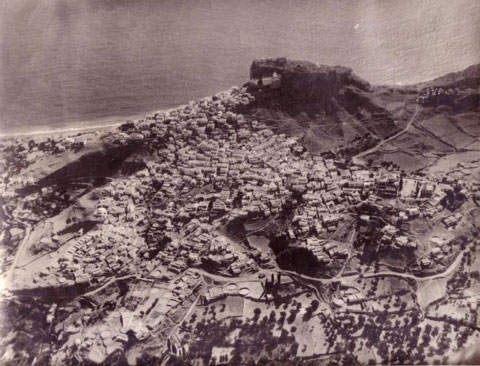
History of Skyros
Skyros was inhabited from the Neolithic period (5500-2800 BC) as testified by the remains that have been found in various areas of the island. Flourishes during the early Bronze age (2800 – 1900 BC) and reaches the peak of acme during the Mycenaean period (1650 – 1100 BC). Skyros has a significant presence in geometric and archaic years. In 475 BC is conquered by the Athenians and in 323 – 322 BC passes into the hands of the Macedonians. In 197 BC, the Romans occupied it and then the Byzantines succeeded them, where Skyros was a part of the Aegean Sea.
Skyros also had a variety of names over the course of centuries since antiquity and the years that followed, most owed its origin to the morphology, land, people and nature. Named Aigibotos (that which nourishes goats), Anemoessa (because of winds), Pelasgia as inhabited by the Pelasgians, Dolopia, island of Dolopon, Perirrytos, surrounded by sea, Pelagia, island of open sea, Skyros because of the porous stone that excavated in quarries and other many names mentioned by ancient geographers and following writers at different periods of time.
Skyros is also mentioned in Greek mythology, and its presence was perceptible throughout the course of Greece.
There are four mythical persons connected with the island of Skyros. Theseus, Lycomedes, Achilles and Neoptolemus.
When Theseus, after his labors, returned from Hades was disappointed by the Menesthea who took the throne, decided to go to Skyros, from where he came from and had a fortune from his father Aegeus.
Arriving in Skyros was the King Lycomedes, who annoyed and fearing of the presence of Theseus, whom he considered a competitor to the throne, decided to exterminate him. So he met his tragic end in Skyros, one of the greatest heroes of Greek mythology. T
In the Palace of Likomidis also lived Achilles, who his mother Thetis had hidden him here, because she knew that if her son was fighting at Troy, we would have had a tragic end. In the Palace of Likomidis, Achilles fell in love with the King's daughter Deidamia, who gave birth to their son, Pyrrhus. Odysseus was the one who led Achilles in Troy, resorting to his trick of known identification of Achilles and the story followed the known to us course.
After the death of Achilles, his son Pyrrhus, at the age of just 12 years old, went to Troy, again with Odysseus’ commixture and fought bravely and thereafter was named Neoptolemus (new to war.).
The first inhabitants of Greece were the Pelasgians and with them the Carians, the Leleges, the Dryopes and Dolopians. Genders of these people lived in Skyros, where we have the first defensive walls in Skyros from Pelasgians.
Skyros was a possession of the Athenians, after Kimon’s ruling and apart from minor periods, remained Athenian hegemony for 389 years. During this time, the conquerors alternated by Athenians, Persians and Macedonians, up to 197 BC where Skyros became a Roman possession. The Roman domination succeeded Byzantium and Skyros was part of the Aegean Sea and prevailed on the island the Christian religion.
In 1204 Constantinople was conquered by the Crusaders, and began the dismemberment of the Empire between the Frankish king Boniface of Montferrat and the Doge of Venice. Skyros was occupied by the brothers Ghizi, as Skiathos, Skopelos and Mykonos, and became acquisition of Venetians and Franks.
In 1538 Skyros was conquered by the Ottomans, but with many privileges, as well as the fact that in the island did not remain for long nor Turkish troops, or Turks rulers. During the Ottoman rule, Skyros, suffered greatly from pirate raids, which forced residents to flee in the Castle.
In the struggle of national independence in 1821, Skyros offered plenty of economic assistance, sent many sailors in the domestic fleet, offered shelter to chieftains and treated several thousand refugees from various cities of Greece.
Today the tradition of the manners and customs of Skyros testify its ancient origins, while there's evidence in the museums and monuments of its great past.